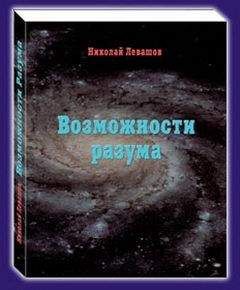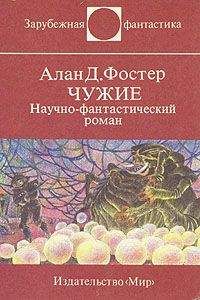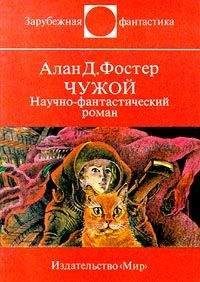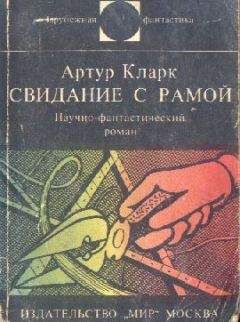counterexample to the rigidity conjecture for polyhe-dra. Inst. Hautes Etudes Sci. Publ. Math. 47, 333–338.
Conway, J., P. Doyle, J. Gilman, and B. Thurston (1994). Geometry and the imagination. http://www.geom.uiuc.edu/docs/education/institute91.
Coolidge, J. L. (1963). A history of geometrical methods. New York: Dover.
Copper, M. (1993). Graph theory and the game of sprouts. Amer. Math. Monthly 100 (5), 478–482.
Coxeter, H. S. M. (1959). The four-color map problem, 1840–1890. Mathematics Teacher 52, 283–289.
--. (1988). Regular and semiregular polyhedra. In M. Senechal and G. Fleck (eds.), Shaping space: A polyhedral approach, proceedings of 1984 conference held in Northampton, MA, 67–79. Boston, Design Science Collection, Birkhauser Boston.
Crombie A. C., (1971). Descartes, Rene du Perron. In C. C. Gillispie (ed.), Dictionary of scientific biography, vol. 4, 51–55. New York: Charles Scribner's Sons.
Cromwell, P. R. (1995). Kepler's work on polyhedra. Math. Intelligencer 17 (3), 23–33.
--. (1997). Polyhedra. Cambridge: Cambridge University Press.
Crowe, M. J. (1974). Mobius, August Ferdinand. In C. C. Gillispie (ed.), Dictionary of scientific biography. Vol. 9, 429–431. New York: Charles Scribner's Sons.
Crowell, R. (1959). Genus of alternating link types. Ann. of Math. (2) 69, 258275.
D'Alarcao, H., and T. E. Moore (1976-77). Euler's formula and a game of Conway's. Journal of Recreational Mathematics 9 (4), 149–251.
de Jonquieres, E. (1890). Note sur un point fondamental de la theorie des polyedres. Comptes Rendus des Seances de l'Academie des Sciences 110, 110–115.
Dehn, M., and P. Heegaard (1907). Analysis situs. In Enzyklopadie Mathe-matische Wissenschaft. Vol. 3, 153–220. Leipzig: Teubner.
Descartes, R. (1965). Discourse on method, Optics, geometry, and meteorology. Translated with an introduction by Paul J. Olscamp. Indianapolis: Bobbs-Merrill.
DeTemple, D. (1989). Pick's theorem: A retrospective. Mathema tics Notes From Washington State University 32 (3 and 4), November, 1–4.
DeTemple, D., and J. M. Robertson (1974). The equivalence of Euler's and Pick's theorems. Math. Teacher 67 (3), 222–226.
Dieudonne, J. (1975). Poincare, Henri Jules. In C. C. Gillispie (ed.), Dictionary of scientific biography. Vol. 11, 51–61. New York: Charles Scribner's Sons.
--. (1989). A history of algebraic and differential topology: 1900–1960. Boston: Birkhauser Boston.
Dombrowski, P. (1979). 150 years after Gauss' «Disquisitiones generales circa superficies curvas». With the original text of Gauss. Vol. 62 of Asterisque. Paris: Societe Mathematique de France.
Doyle, P. H., and D. A. Moran (1968). A short proof that compact 2-manifolds can be triangulated. Invent. Math. 5, 160–162.
Dudley, U. (1992). Mathematical cranks. MAA Spectrum series. Washington DC: Mathematical Association of America.
Dunham, W. (1990). Journey through genius: The great theorems of mathematics. New York: John Wiley & Sons.
--. (1999). Euler: The master of us all. Vol. 22 of The Dolciani Mathematical Expositions.Washington DC: Mathematical Association of America.
--. (ed.) (2007). The genius of Euler: Reflections on his life and work. MAA Spectrum series.Washington DC: Mathematical Association of America.
Dyck,W. (1888). Beitrage zur analysis situs. Math. Ann. XXXII, 457–512.
Emmer, M. (1993). Art and mathematics: The Platonic solids. In M. Emmer (ed.), The visual mind, Leonardo Book Ser., 215–220. Cambridge, MA: MIT Press.
Epple, M. (1999). Geometric aspects in the development of knot theory. In History of topology, 301–357. Amsterdam: North-Holland.
Euclid (1926). The thirteen books of Euclid's Elements translated from the text of Heiberg. Vol. I: Introduction and Books I, II. Vol. II: Books III–IX. Vol. III: Books X–XIII and Appendix. Translated with introduction and commentary by Thomas L. Heath, 2nd ed. Cambridge: Cambridge University Press.
Euler, L. (1736). Solutio problematis ad geometriam situs pertinentis. Com-mentarii Academiae Scientiarum Imperialis Petropolitanae 8, 128-40. Reprinted in Opera Omnia series 1, vol. 7, 1-10.
--. (1758a). Demonstratio nonnullarum insignium proprietatum quibus solida hedris planis inclusa sunt praedita. Novi Commentarii Academiae Sci-entiarum Petropolitanae 4, 94-108. Reprinted in Opera Omnia series 1, vol. 26, 94-108.
--. (1758b). Elementa doctrinae solidorum. Novi Commentarii Academiae Scientiarum Petropolitanae 4, 72–93. Reprinted in Opera Omnia series 1, vol. 26, 71–93.
--. (1758c). Proof of some notable properties with which solids enclosed by plane faces are endowed. Translated by Chris Francese and David Richeson. http://www.eulerarchive.org.
--. (1760). Recherches sur la courbure des surfaces. Mem. Acad. Sci. Berlin 16, 119–143.
--. (1862). Continuatio fragmentorum ex adversariis mathematicis depromptorum. In P. H. Fuss and N. Fuss (eds.), Opera postuma mathematica et physica, Vol. 1, 487–518. St. Petersburg: St. Petersburg Academy of Sciences.
--. (1911-). Opera Omnia. Basel: Birkhauser.
Euler Archive, http://www.eulerarchive.org. Created by D. Klyve and L. Stem-koski.
Eves, H. (1990). An introduction to the history of mathematics. 6th ed. Pacific Grove, CA: Brooks/Cole.
--. (1969a). In mathematical circles, quadrants I and II. Boston: Prindle, Weber & Schmidt.
--. (1969b). In mathematical circles, quadrants III and IV. Boston: Prindle, Weber & Schmidt.
Federico, P. J. (1982). Descartes on polyhedra: A study of the De Solidorum Elementis. Vol. 4 of Sources in the history of mathematics and physical sciences. New York: Springer-Verlag.
Field, J. V. (1979). Kepler's star polyhedra. Vistas Astronom. 23 (2), 109–141.
--. (1988). Kepler's geometrical cosmology. Chicago: University of Chicago Press.
Francese, C., and D. Richeson (2007). The flaw in Euler's proof of his polyhedral formula. Amer. Math. Monthly 114, April, 286–296.
Francis, G. K. (1987). A topological picturebook. New York: Springer-Verlag.
Francis, G. K., and J. R. Weeks (1999). Conway's ZIP proof. Amer. Math. Monthly 106 (5), 393–399.
Frechet, M., and K. Fan (1967). Initiation to combinatorial topo logy. Translated from the French, with some notes, by H. W. Eves. Boston: Prindle, Weber & Schmidt.
Freedman, M. H. (1982). The topology of four-dimensional manifolds. J. Differential Geom. 17 (3), 357–453.
Frei, G. and U. Stammbach (1999). Heinz Hopf. In I. M. James (ed.), History of topology, 991-1008. Amsterdam: North-Holland.
Freudenthal, H. (1971). Cauchy, Augustin-Lous. In C. C. Gillispie (ed.), Dictionary of scientific biography. Vol. 3, 131–148. New York: Charles Scribner's Sons.
--. (1972). Hopf, Heinz. In C. C. Gillispie (ed.), Dictionary of scientific biography. Vol. 6, 496–497. New York: Charles Scribner's Sons.
--. (1975). Riemann, Georg Friedrich Bernhard. In C. C. Gillispie (ed.), Dictionary of scientific biography. Vol. 11, 447–456. New York: Charles Scribner's Sons.
Fritsch, R. and G. Fritsch (1998). The four-color theorem: History, topological foundations, and idea of





